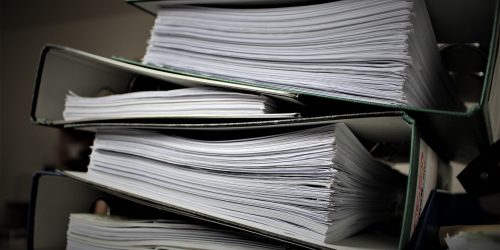Should You Buy One Large Printer Or a Few Smaller Printers?
It might be difficult to choose a printer on the market that is suitable for your business needs because there is such a wide range of options out there. If printing represents the interface between the digital and physical worlds, organizations require a solution that is not only cost-effective but also provides new functions that match the needs of digital work environments.
There is also the issue of repair and follow-up care to consider. Printers can become more of a burden than an aid if these factors are ignored. Here are a few things to think about when choosing between a few smaller printers or one large printer for your business.
Take a look at our wide variety of printers for sale.
Why choose a Large Printer?
Multifunction capability is a feature of many large printers, but not all. By definition, a large printer is one that is somewhat bigger than a conventional printer and can handle a greater volume of paper at once. Many multifunction printers (MFPs) have the ability to copy, scan, and fax, while large printers may or may not have these capabilities.
By contrast, multifunction printers (MFPs) are able to perform tasks beyond just printing, such as scanning, copying, and even faxing. Businesses that require the ability to print, scan, copy, and fax documents might benefit significantly from investing in an MFP.
In this article, we will look at the functionality of large printers, not an MFP, as compared to a few small printers.
A single large printer may be the superior choice for your organisation for a number of reasons, despite the fact that multiple smaller printers may seem like a more practical and affordable alternative.

Productive and Efficient
The added efficiency and productivity that might result from having a large printer in the business is one of the printer’s primary benefits. If you need to print many copies of a document or a big number of documents fast, investing in a large printer will be the best option. The time and effort spent on printing can be better directed toward other projects.
Superior Printing Quality
One further benefit of using a large printer is that it usually has better print quality than its smaller counterparts. Especially for graphics and photos, the high-resolution printing technology used by commercial printers yields prints that are sharper and more detailed. This is especially crucial if your company’s advertising materials, like brochures and posters, rely on high-quality printing done in-house to convey their message.

Savings on costs
The initial investment in one large printer may be greater than that of several smaller ones, but in the long run, the former can help you save money. Costs associated with purchasing and maintaining a single large printer can be significantly lower than those associated with a number of smaller printers. The fact that a large printer can use larger cartridges and print on a wider variety of paper sizes can also translate to savings on printing supplies like ink and paper.
Simplicity
Managing many tiny printers with varied features and settings is time-consuming. A single large printer simplifies printing infrastructure management. You can centrally track printer usage, maintenance, and settings. This saves time and reduces printing and technical errors.
Why should you choose a few small printers for your business?
While there are benefits to using a single large printer, there are also scenarios in which using multiple smaller printers might be preferable. Here are some cases in which several smaller printers would be preferable to one large one:
Adaptability
When you have access to a network of small printers, you have more options for where and how you print. You could, for instance, have one printer for printing color documents and another for printing black and white, or you may designate a certain printer for a particular department or team. In situations when many individuals have simultaneous printing needs, this can facilitate shorter wait times and easier access to printers.
Space
Multiple small printers may be better for small offices. Large printers need a dedicated location, but small ones can fit on a desk or shelf. This is crucial if your office is cramped or small.
Backup
A few small printers can provide backup in case one breaks or needs maintenance. If your large printer breaks, you won’t be able to print until it’s fixed. Print documents on other small printers while one is being serviced.

Budget
Small printers may be cheaper than large ones. Small printers cost less and use less ink and toner. If you have a tiny budget or printing volume, this may be significant.
The reduced effort required for maintenance
Because of their reduced complexity and size, smaller printers can be less of a hassle to keep up and fix if something goes wrong. If your printing infrastructure is down, this can help get it back up and operating as soon as feasible.
Cut back on energy use
If you’re concerned about your carbon footprint or your electricity bill, you might want to consider purchasing a smaller printer.
You might also be interested in our blog on Purchasing vs Renting a Shredder.
